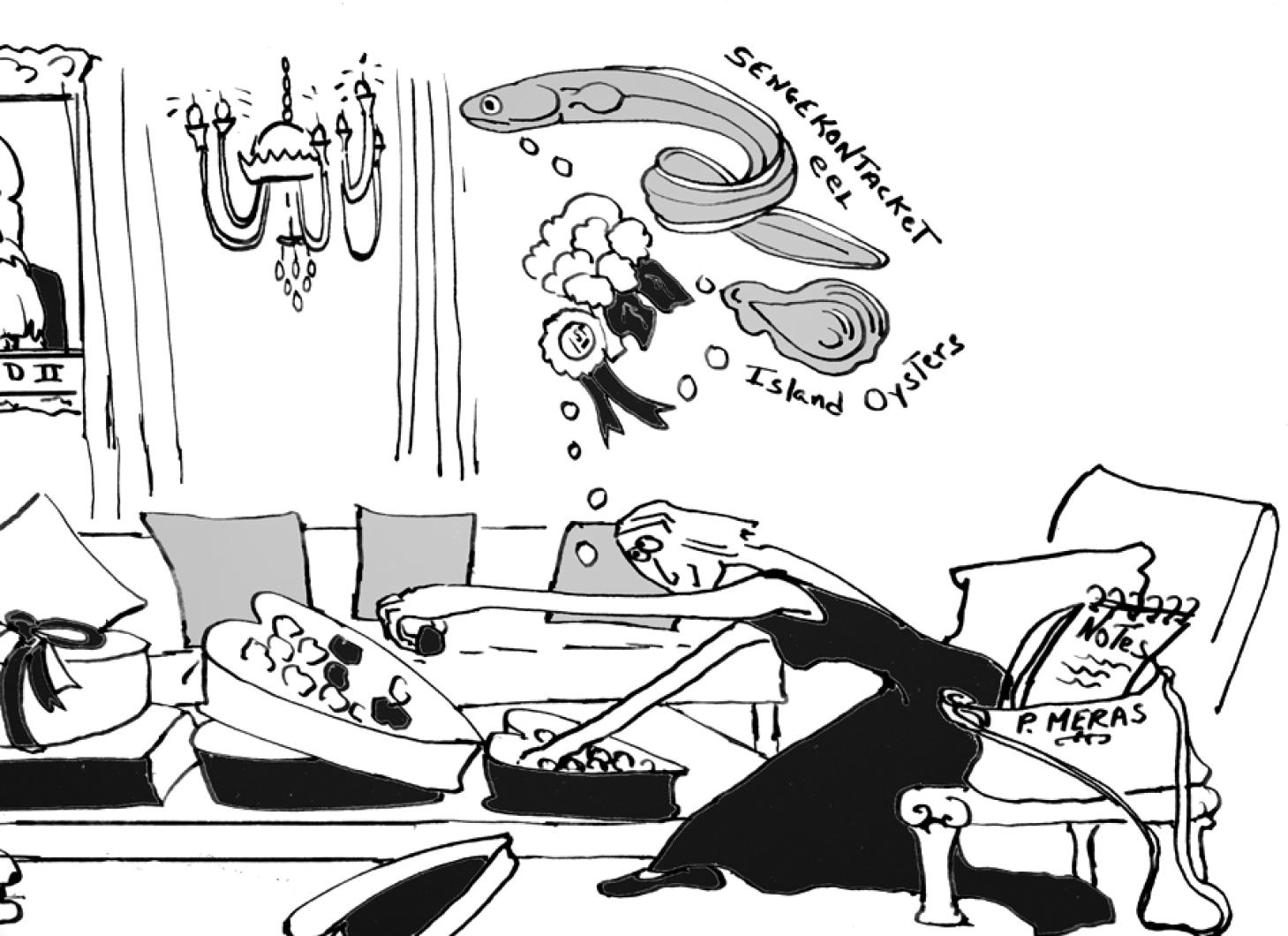With Valentine’s Day on Sunday, it’s all hearts and flowers — and chocolates — right now. Here on the Vineyard, the chocolates are Chilmark Chocolates, of course. Like most of us, I indulge whenever I can. I know that First Lady Michelle Obama is speaking out these days about obesity, but her main concern is with children. Senior citizen that I am, I am relatively unconcerned about gaining weight. At least I was, until I went on a chocolate-eating binge last month in Belgium. I ate some pretty trendy chocolates.
One that I sampled in Bruges had an oyster juice filling that was boiled with sweet cream. Now there is a filling Chilmark chocolatiers could easily make if they wanted to. After all, Island oysters are accessible just around the corner in Tisbury Great Pond. I tried another with smoked eel in the filling and found it quite tasty. That, too, is something Chilmark Chocolate-makers could try, since Sengekontacket has an eel supply. If my taste buds serve me well, at a shop called The Chocolate Line in Bruges, the eel filling was combined with cauliflower and orange. Another chocolate I was offered had carrots in it.
One that I quite enjoyed combined olives, basil and sun-dried tomatoes. Still another had a fried onion filling. Then there was one with garlic and sweet cream inside. It crossed my mind that at Agricultural Fair time, if Chilmark Chocolate-makers learned of some of these fashionable Belgian flavors, they would certainly have their choice of prize-winning carrots, onions, garlic and cauliflower for fillings. The Belgians clearly have come up with some innovative chocolate ideas.
It wasn’t only in Bruges that I found chocolates of the new style. In Brussels, chocolatier Laurent Gerbaud offered me a praline (in Belgium, a praline is a filled chocolate) whose flavors were salt and pepper. At a shop named Zaabar, I sampled one flavored with thyme. At Galler, another Brussels chocolate-maker, I was told five or six years ago that young, up-and-coming Belgian chocolatiers got bored with the old-fashioned chocolates of Godiva and Leonidas, two of the main exporters of Belgian chocolate to the United States. Almond and hazelnut, orange and raspberry-flavored chocolates were tasty enough, but it was time to introduce the element of surprise into chocolate-making, with flavors that were biting and exciting. So they began experimenting. At Zaabar, flavoring chocolate with pimento took off, as did flavoring it with thyme. Lavender-flavored chocolate also became a popular item.
From Brussels, I went on to Antwerp on my chocolate-tasting expedition. At Gunther Watte’s chocolate café there, I had a raspberry and saffron-filled praline. At Goossen’s, another exporter to the United States, I tried a chili chocolate as well as one that combined mango and curry flavors. Still experimenting, I sampled tea-flavored chocolate at Van Hecke’s in Ghent.
When I asked who ate these extravagant new chocolates, I was told that 40 per cent of the population bought them. Sixty per cent, my informants told me disparagingly, still favored the traditional kind.
I expect most Chilmark Chocolate consumers are traditionalists, and I rather doubt that the owners of this fine Vineyard shop will accept my suggestion to send a shellfisherman out to Tisbury Great Pond after oysters or to Sengekontacket after eels for their chocolates, or for that matter to have someone selecting blue-ribbon-winning vegetables at the fair. But it seemed worth mentioning.
On my Belgian chocolate adventure, I also found out, for the benefit of chocolate-givers this Valentine’s Day, that health-wise, chocolate has a lot going for it. Therefore those who give Chilmark Chocolates need not worry if their gifts add a bit to their beloved’s waistline. The pounds will be healthy, say the chocolate-mad Belgians. Each Belgian eats 12 pounds of chocolate a year. And the tannic acid in chocolate will even prevent tooth decay!







Comments
Comment policy »